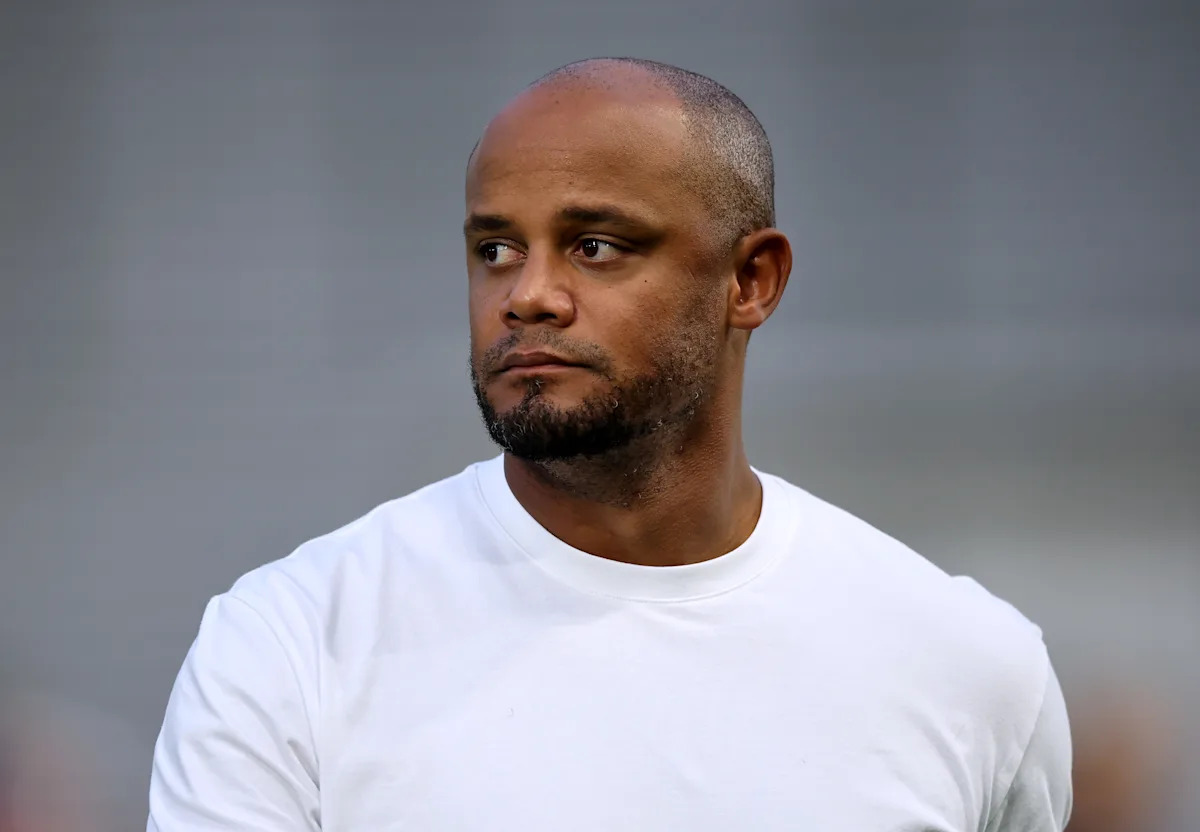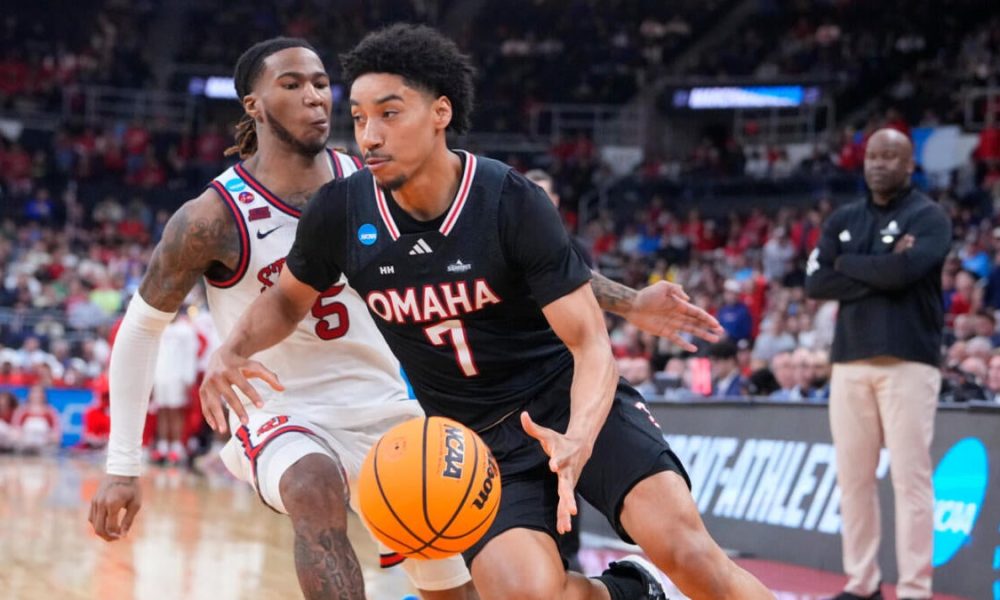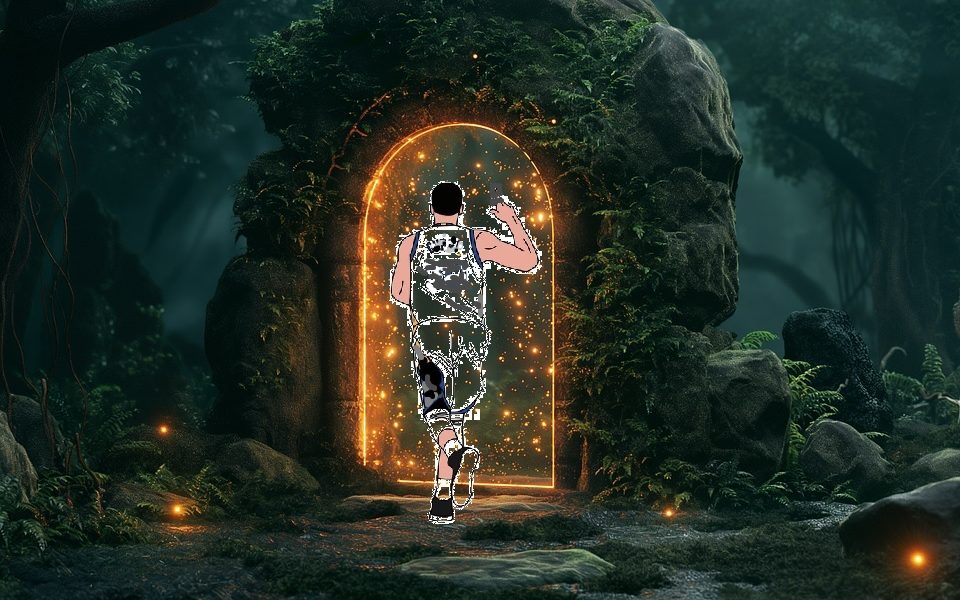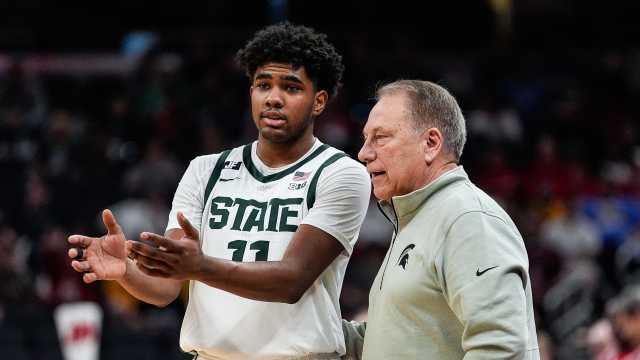
Rec Sports
CANUCKS AND LIUNA LOCAL 1611 ANNOUNCE TRAIL MEMORIAL CENTRE WINNER OF THE “GAME CHANGER RENO” CONTEST

Vancouver B.C. – The Vancouver Canucks, in partnership with LiUNA Local 1611, are excited to announce that the Trail Memorial Centre, located in Trail, B.C., has been named winner of the “Game Changer Reno” contest.
“We are proud to award the Trail Memorial Centre $100,000 for critical upgrades and renovations that will ensure the rink remains a pillar of the community,” said Michael Doyle, President, Canucks Sports & Entertainment, Business Operations. “This collaboration with LiUNA Local 1611 reflects our shared commitment to investing in local sports infrastructure and providing opportunities for youth hockey development throughout B.C.”
“The history of this arena is remarkable — it’s been a place where generations of families have gathered, grown, and celebrated through sport and recreation and many community gatherings,” said Colleen Jones, City of Trail Mayor. “We’re so grateful to whoever nominated us and to the Canucks and LiUNA for supporting upgrades that will ensure future generations can experience the same pride, connection, and opportunity.”
“Home of the Trail Smoke Eaters for more than 100 years and the industrial hub of the Kootenay region, Trail is where hockey and hard work align,” said Nav Malhotra, Business Manager/Secretary-Treasurer of LiUNA Local 1611. “We are proud to contribute to the advancement of youth sport in arguably the biggest little hard-working Hockey Town in British Columbia.”
On April 26, the Canucks and LiUNA Local 1611 were proud to be in Trail to present the $100,000 cheque as a part of a special ceremony. The event brought the community of Trail together to celebrate and acknowledge the positive impact these funds will have on the community. The Canucks were represented by alumnus and Ring of Honour inductee, Kirk McLean along with team mascot FIN.
Rec Sports
Central Pa. youth church leader charged with corruption of minors

A 20-year-old Lancaster County man was charged last month after police said he abused his position as a youth church leader to convince a juvenile to perform sex acts with him, according to an affidavit of probable cause.
On April 22, the victim told Northern Lancaster Regional Police her youth church leader, Kelvin D. Perez, of Holtwood, used his position to encourage her to sneak out and meet for sex.
Between January and April, Perez would send messages to the victim on Instagram, complimenting her and asking to meet outside of church events, the affidavit said.
During those months, Perez would drive to the victim’s house and park down the road. He would then message the girl to sneak out of her house and meet up with him.
On at least one occasion, Perez convinced the girl to sneak him into her basement while her parents were away.
Police on Aug. 5 charged Perez with one count of corruption of minors, a first-degree misdemeanor. His preliminary hearing is scheduled for Sept. 23.
The affidavit did not include the victim’s age.
If you purchase a product or register for an account through a link on our site, we may receive compensation. By using this site, you consent to our User Agreement and agree that your clicks, interactions, and personal information may be collected, recorded, and/or stored by us and social media and other third-party partners in accordance with our Privacy Policy.
Rec Sports
Reno resort to break ground on $1 billion arena project

Four months after the approval of a controversial tax financing deal, the Grand Sierra Resort announced it is breaking ground on its $1 billion arena project.
The Grand Sierra Resort in Reno is set to break ground on its $1 billion arena project four months after it secured a controversial tax increment financing deal.
The GSR announced a groundbreaking ceremony will be held Tuesday, Sept. 30, in the northwest parking lot and include “a first look at what’s to come.” The event is not open to the public.
“This project will be a transformative addition to our resort, the University of Nevada and the Northern Nevada region,” the GSR said in a statement about the groundbreaking.
The GSR filed a new construction permit with the city of Reno in July for the project, which will be done in multiple phases. The initial work represents $189 million of the estimated $786 million for the first phase of the project.
Details listed in the permit include a 10,000-seat capacity arena, community ice rink and food and beverage booths. Other amenities include a 2,400-spot parking garage.
The groundbreaking follows the Reno Redevelopment Agency’s approval in May of GSR’s request for tax increment financing to help fund the project.
Tax-increment financing is a method of funding projects where future increases in tax revenue are redirected back to private developers. Under Nevada law, these projects must be built in designated redevelopment areas that are suffering from blight.
According to the contract, GSR will be reimbursed 90% of its property tax while the TIF is in effect, and the redevelopment agency would keep 10% of the property taxes. The agreement sunsets in 2035.
As part of the deal, GSR owner Alex Meruelo said he would also give the lease to the property for Fire Station 21 to the city of Reno and give an additional 5% of the 90% property tax reimbursement earnings to youth sports recreation facilities.
Overall, GSR would be reimbursed an estimated $61.3 million, and the redevelopment agency would keep roughly $6.8 million in property taxes through 2035.
The use of TIF for the project has been controversial, particularly since GSR initially stated that it will not use public funding when it announced the arena back in 2023.
“I’m just wondering why the city of Reno should use our public funds for a private business?” Council Member Meghan Ebert asked in May. “I’m just not exactly sure why this particular investment should make sense to us, knowing that our downtown is in the shape that it is.”
One of the biggest supporters of the project is the University of Nevada, Reno.
In addition to hosting live events, the GSR arena will also serve as the venue for the Nevada Wolf Pack men’s basketball team’s home games.
“To be competitive in college sports, we have to have a venue and the ability to generate revenue, and I’m not into competing, I’m into winning,” UNR President Brian Sandoval said at the May redevelopment meeting. “(The GSR project) checks every single box.”
The GSR Arena isexpected to open in late summer of 2027 with the Nevada men’s basketball games played in the arena in fall/winter 2027.
Rec Sports
Undocumented in LA

The Trump administration’s laser focus on identifying and uprooting people without legal status in Los Angeles has disrupted normal life in whole swaths of the city since June.
Corridors typically alive with street vendors have been quiet. Volunteers have been monitoring Home Depots for federal agents. And across the region, some people are staying home from work and school, afraid they may encounter ICE agents.
That this is a fractured and frightening time in the region for immigrant communities is undisputed.
Getting a fuller picture of people without legal status who live and work here is more complex.
To better understand our communities and neighbors, LAist looked into what we do and don’t know about Angelenos without full legal status.
Who gathers this information?
The U.S. Census conducted every 10 years is supposed to be a head count of everyone living in the country at that moment in time — and agnostic on their immigration status. The population count affects a whole range of things, notably how political representation is determined and how federal dollars are allocated.
Since 1960, the Census has not asked respondents about their citizenship status. An effort to add that question in 2020 by the first Trump administration was met with significant pushback. Critics said it would have a chilling effect and depress participation of non-citizens and their relatives — ultimately leaving us without a full count of who lives here.
Still, the government keeps estimates of the number of people living in the U.S. without authorization. Academics and organizations also do the work of counting the people living in the U.S. without legal status. Their research offers a closer look at the many people who are undocumented in L.A. and the surrounding area.
More than 9% of people in LA County are undocumented
Recent research from the USC Equity Research Institute looks at L.A. County specifically, estimating nearly 950,000 undocumented immigrants live here. That’s more than 9% of people in the county who lack legal status.
When researchers widen the lens to include people who are undocumented or living with an undocumented family member, that number jumps to nearly 20%, or almost one in five people.
To compile their estimates, USC researchers use surveys conducted by the U.S. Census Bureau, take the number of non-citizen immigrants and remove the people that have legal status, according to Prof. Manuel Pastor, director of the Equity Research Institute. The latest data they used is from 2023.
The results indicate the depth and breadth of the impact of ramped-up immigration enforcement in L.A. this summer. Masked federal agents have detained parents, people who have been in the U.S. for decades, and even some U.S. citizens.
“ I think it’s useful for Angelenos to realize how ubiquitous it is to be without documentation,” Pastor said.
Immigrants in California by the numbers
California has more immigrants than any other state — around 10.6 million people out of a total population of more than 39 million in 2023, according to the Public Policy Institute of California.
Most immigrants in California have legal status. More than half are U.S. citizens, according to California officials. In 2022, 83% of immigrants in California either were citizens or had other legal residency status, such as a green card or a visa.
Estimates of exactly how many undocumented people are living in California vary. The Department of Homeland Security estimated 2.6 million unauthorized immigrants were living in California.
According to Pew Research Center, in 2023, California was home to around 2.3 million immigrants without full legal status. That number includes people in a variety of situations, including those with some level of legal protections, like asylum applicants, DACA recipients, and people who have been granted temporary protected status.
California is home to the largest cohort of DACA recipients in the nation. As of 2024, more than a quarter of the around 538,000 active recipients of Deferred Action for Childhood Arrivals live in California, according to government data. That status protects undocumented young adults who were brought to the U.S. as children from deportation and allows them work authorization.
People without full legal status in California have a wide range of national origins. Nearly half of the state’s undocumented population is from Mexico, according to a report from the Bay Area Council Economic Institute and UC Merced. The vast majority of that group — 80% — have been in the U.S. for more than 15 years.
In recent years, more people have arrived in the state from Central America and Asia. The report attributes the shifting demographics of new arrivals to improved economic prospects in Mexico and growing economic and political instability in Central America and countries like China and India.
A growing population
The Trump administration ran on a campaign promise of mass deportations, in part in response to a rise in immigration to the U.S. after the COVID-19 pandemic.
Estimates of exactly how many undocumented people are in the country and how that number has changed vary. According to the Pew Research Center, the number of unauthorized immigrants in 2023 was 14 million, up from 10.5 million in 2021 — a 33% increase.
By comparison, California’s unauthorized population grew around 23% in that time period, according to Pew’s estimates. In 2023, the state was home to around 2.3 million undocumented immigrants, a bump of around 425,000 compared to 2021.
The increase specifically in Los Angeles was even smaller around that same time period — 15% according to USC’s Pastor.
“We did not get the gigantic influx of shocking new immigrants that the rest of the country did,” Pastor told LAist. “We got some, but mostly they went to other parts of the country.”
Focusing on LA County
USC estimates that 948,700 people in L.A. County are undocumented, out of a total population of 10.1 million. Most people without legal status have been in the U.S. for more than a decade, according to those estimates. Some 73% arrived in the country more than 10 years ago, while 18% of people have been here for 31 years or more.
Most undocumented immigrants in L.A. County — 83.8% — are Latino. The next largest group is Asian Americans, who make up 10.6% of the county’s undocumented immigrants.
Where are people from?
The largest share of undocumented immigrants in L.A. County come from Mexico, followed by Guatemala and El Salvador. USC estimates that more than 343,000 Mexican people without legal status live in the county.
A share of L.A.’s undocumented population are Indigenous migrants from Mexico and Central America, but the number is difficult to estimate, according to USC. According to a separate report from the Equity Research Institute and advocacy group CIELO, the county is home to at least 24 Indigenous migrant communities, including Zapotec and K’iche’.
Chinese people make up the fourth-largest group of undocumented people by ancestry, according to the report. That estimate is 32,600.
Who is being targeted for deportation?
As the federal government has ramped up deportations across the country, it has made a particularly visible effort here in L.A.
Federal officials have defended the enforcement actions, saying they’re targeting people with criminal records.
LAist found that as an average since last October, only about 18% of those detained in California ICE facilities have had any criminal convictions.
Mixed status families
Hundreds of thousands of U.S. citizens in L.A. County live with family members who are undocumented — more than 863,000 according to USC estimates.
Those numbers are particularly striking for children. More than half of citizens living with undocumented family members are younger than 17 years old. In the county, 20% of children under the age of 5 have at least one parent who does not have legal status.
As federal immigration raids in Southern California have separated workers from their families and children, many left behind are struggling with making ends meet and paying rent. Eighty percent of undocumented immigrants in the county are renters.
“With fears around ICE raids and the possibility that undocumented workers may choose not to show up for work, there is also a great risk of missing rent payments and becoming even more vulnerable to losing housing,” the USC report reads.
Economic contributions of undocumented workers
The vast majority of undocumented immigrants in L.A. County are of working age: 90% are between 18 and 64. Just 1% are 65 or older, according to USC’s data.
The report points to the major role undocumented workers play in the local economy. According to USC’s estimates, 37% of cleaning and maintenance workers and 25% of food preparation and service workers in L.A. County are undocumented.
The industry with the highest percentage of undocumented workers is construction (40%), which is already experiencing a labor shortage and will be key to rebuilding parts of the county destroyed in the January fires.
Immigrants without legal status in the county also contribute billions in taxes. In 2023, USC estimates undocumented immigrants paid more than $3.7 billion in federal, state, and local taxes.
Jordan Rynning contributed to this report.
Rec Sports
Two Wilson Students Form Organization To Combat Sudden Cardiac Arrest – The562.org

The562’s coverage of Long Beach Wilson Athletics is sponsored by Joel Bitonio, Class of 2009.
Two Wilson High School students are working to address an issue that often goes unnoticed until it’s too late: sudden cardiac arrest in young athletes.
Alexis Torres and Emmalie Arzate, both student-athletes and members of Wilson’s student athletic training staff, recently founded the Hearts on the Field Foundation – a nonprofit dedicated to improving cardiac safety in youth sports.
For Arzate, the mission is deeply personal. Her cousin passed away earlier this year due to cardiac arrest, a tragedy that reshaped how she saw the condition.
“That really opened my eyes,” Arzate said. “I knew about cardiac arrest before, but I never understood how deep and devastating it could be until it hit home. It made me want to learn more and find ways to prevent this from happening to other families.”
Torres, who serves as Board President and Executive Director of the organization, said that he’s always wanted to do something with purpose.
“I’ve always wanted to make an impact on my community,” Torres said. “This is such an important issue that doesn’t get enough attention. People know sudden cardiac arrest is serious, but many don’t know how extensive the problem really is. Our goal is to change that through education, prevention, and action.”
According to the American Heart Association, sudden cardiac arrest is the leading cause of death in young athletes during sports activities. While considered rare the condition is devastating with studies estimating between one in 40,000 and one in 80,000 athletes dying each year.
The risk has drawn growing public attention in recent years following high-profile cases, including Los Angeles Lakers player Bronny James, who suffered cardiac arrest while at USC, and Buffalo Bills defensive back Damar Hamlin, who collapsed during a nationally televised game. Those incidents highlighted both the dangers of the condition and the importance of immediate medical action.
Although Hearts on the Field is still in its early stages, the founders have already taken significant steps. They are registered as a nonprofit in California and are pursuing official 501(c)(3) status. Their mission is to save lives by promoting education, encouraging early recognition of symptoms, improving access to automated external defibrillators (AEDs) and advocating for comprehensive cardiac safety programs in schools and sports organizations.
To support their vision, Torres and Arzate brought together a team of current Wilson students and recent alumni to help lead the effort with current students Alesandra Rocha, Emma Jade Garcia, Leticia Tovar and Wilson alums Malayah Terry and Jessica Medrano.
Together this group is working to shape Hearts on the Field into a sustainable organization with long-term impact.
The organization’s future includes offering free CPR and AED certification classes to athletes, coaches, and even team captains. Torres explained the reasoning behind this approach using his own experience on the cross-country team as an example.
“I feel that if the team captain knows CPR that can provide an extra protection,” Torres said. “They’re the ones that are with the team 24/7. They’re the first ones to notice when something’s wrong.”
The group’s immediate financial need is $300 to complete the 501(c)(3) application, but Torres and Arzate emphasize that fundraising is a much broader goal. They hope to secure funding not only to cover startup costs but also to expand programming and provide life-saving training across the community.
“It hasn’t been easy,” Torres said. “We probably should have asked for more guidance along the way, but we’ve managed to figure things out. Right now, our biggest hurdle is fundraising so we can become fully registered and start expanding our programs.”
Despite the challenges of launching a nonprofit, both co-founders continue to balance their school and athletic responsibilities. Torres is enrolled in an EMT program at a local college while also completing dual-enrollment coursework, and Arzate remains active as a golfer at Wilson.
Torres and Arzate hope that Hearts on the Field will outlive their time in high school. They envision expanding into colleges, creating chapters across different campuses, and building a network of student leaders who can continue the work.
“Of course, it’s a big dream,” Arzate said. “But we want to reach as far as possible. Right now, our focus is student athletes, but ultimately this can impact anyone, anywhere.”
To help cover start-up expenses and raise awareness, the group has already scheduled fundraisers, including local restaurant events in September. Their first fundraiser will take place on September 19 at Raising Cane’s location at the Traffic Circle in Long Beach.
For more information about the organization or how to help visit heartsonthefield.org.
Rec Sports
Youth integration still a challenge for Bayern Munich

Last season, Bayern Munich coach Vincent Kompany was criticized for not using more young players last season, but so far during this campaign, the head coach has show at least some willingness to integrate the kids into his squad.
Per Tz journalists Philipp Kessler and Mano Bonke (via @iMiaSanMia), last season was a campaign for Kompany to rely on his veterans to guide the team, but 2025/26 should represent more opportunity for young players to break into the senior squad:
In his first season, Vincent Kompany relied almost exclusively on experience. The squad was structured in a way that every position was filled with established players, therefore there was no chance for the young players to make their breakthrough. This season, however, the squad is smaller and the starters are clearer. The young players will fill the gaps in the squad and therefore get more playing time. This plan is supported by Kompany. The motto is to show more courage and give young players their chance.
However, it could be hard to continue effort to integrate youngsters when Kompany has not been impressed by any of the current crop of Bayern Munich II players:
What’s striking is that almost no player from the second team has impressed Kompany so far. That hasn’t gone unnoticed by the club’s management. Not only is the club’s failure to achieve promotion last season in the Regionalliga viewed with criticism, the style of play the club has chosen for its future (high pressing and possession football) has also not been implemented in the second team.
It seems that Bayern Munich II could be going the way of Class AAA teams in Major League Baseball’s system, where it is becoming more prevalent that youngsters make the jump from Class AA (in this case, Bayern Munich’s youth teams) to MLB rather than spend time in Class AAA. If so, Bayern Munich might need to think about its approach with roster building for the second team:
The group of talented players, who regularly train with the first team, traveled to the Club World Cup, and recently impressed in preseason (Lennart Karl, Wisdom Mike, etc), have been promoted directly from the U17s and U19s – who reached the youth championships semifinals with a style of play that the club wants for the future. Sporting Director Christoph Freund and the respective youth coaches, Patrick Kaniuth and Peter Gaydarov, among others, recommended these talented players to Kompany. This trend was initially criticized at the Campus. The general consensus was that older talents were being overlooked in favor of younger ones. But the atmosphere has since improved, as the talented younger players made better use of their chances with the first team.
The entire club could be headed into a period of transition next summer, so to re-think the roster for Bayern Munich II and the objectives for that squad could be another item on the agenda to be addressed.
Bayern Munich is back in action this week and a tough slate of games lies ahead. Before we tackle all of that, though, there is much to unpack from Germany’s international break and the explosive performance from Uli Hoeneß on SPORT1-Doppelpass over the weekend.
Advertisement
Let’s get into all of that more on this edition of the Bavarian Podcast Works Show! This is what we have on tap:
-
Let’s talk about the good, the bad, and ugly from Germany’s international break performances vs. Slovakia and Northern Ireland.
-
Julian Nagelsmann is in a make-or-break period with Germany.
-
Does the DFB need to think about bringing in Jürgen Klopp to overhaul the entire organization.
-
Uli Hoeneß says Bayern Munich was the real winner of the transfer window and that Nicolas Jackson needs to get 40 starts for the obligation to buy clause to activate.
-
Chuck quickly addresses Philadelphia’s return to the spotlight (for all of the wrong reasons).
-
It’s time to turn focus back to Bayern Munich.
Rec Sports
How Utah’s Olympic organizers will spend $200M-plus just donated – Deseret News
For four-time Olympic speedskater Catherine Raney Norman, what’s most important about the more than $200 million in donations just announced for Utah’s next Winter Games is the impact it’ll have on getting kids involved in sports.
“It’s absolutely critical and instrumental,” said Raney Norman, who was key to the massive fundraising effort as the vice president for development and athlete relations for the Organizing Committee for the 2034 Olympic and Paralympic Winter Games.
“Even back in the bid phase, our big piece was about how we elevate our communities and our youth. This is kind of a culmination, this is the starting point,” she told the Deseret News. “We’re on the starting line and we get to move forward with some of our programs.”
As chair of the bid committee during Utah’s campaign to host a second Olympics and Paralympics, Raney Norman pitched what was being called “Project 29,” a plan to bring Olympic sports opportunities to children in each of the state’s 29 counties during the lead-up to 2034.
Just what programs will be offered now that Utah is hosting again remains to be seen, but they are expected to involve partnering with existing organizations already connecting youth to sports in the state.
“We are still early on,” she said. “We’re still formulating exactly what that’s going to look like. But without the support of our donors, without the support of our community champions, it wouldn’t be possible.”
The long-track speedskater whose career included competing in Utah’s 2002 Winter Games, knows firsthand that early involvement in sports can make a significant difference in a young person’s life.

“One hundred percent,” Raney Norman said. “Whether they’re dreaming (of going) to the Games or they have an opportunity to participate … we know that sport helps kids long term, throughout their entire life.”
The new president of the International Olympic Committee, Kirsty Coventry of Zimbabwe, has also addressed the need to ensure young people benefit from Utah’s upcoming Games, especially since they were awarded earlier than the usual seven years out.

“With the earlier election more than nine years ahead of your Games, you have a tremendous opportunity. We encourage you to use the full power of the (Olympic) rings to nurture your youth,” Coventry said in a video message played Monday at a reception for Utah donors.
She also urged organizers to “develop winter sport even further and radiate beyond your borders across the nation and the world.” Utah’s bid committee heard a similar message about expanding their reach from the IOC inspection team that visited the state last year.
Fraser Bullock, the organizing committee’s president and executive chair, said early on that much of the donor revenue will be used to cover the cost of what’s now fewer than a dozen employees as well as making annual rental payments on Olympic facilities operated by a nonprofit.
The contributions, which are spread out through 2034, are the organizing committee’s only source of revenue until after the next Olympics in the U.S., the 2028 Summer Games in Los Angeles, to avoid competing for sponsors.
The $4 billion budget for staging the 2034 Games does not include any state or local tax dollars, although federal assistance is anticipated for security as well as some transportation costs. Earlier this year, the amount expected from donors was nearly doubled, to $300 million.
Bullock said there are “pockets of money” budgeted for youth sports and education programs.
Raney Norman said there are also some early programs set to be launched soon, including a service initiative with the Granite School District’s education foundation set to be announced at the 2025 U.S. Olympic and Paralympic Assembly being held in Salt Lake City later this month.
She said educational programs are still in the planning phases, but organizers are “chomping at the bit to get those launched,” although that likely won’t be until 2027.
-

 High School Sports2 weeks ago
High School Sports2 weeks agoSix college basketball freshmen who impressed this summer and could surprise in 2025
-

 NIL2 weeks ago
NIL2 weeks agoData and Brands Make the Case for Paying WNBA Players More
-

 College Sports5 days ago
College Sports5 days agoNHL rookies weigh in on NCAA, NHL rule changes, new uniforms
-

 Health3 weeks ago
Health3 weeks agoNaomi Osaka Speaks Out About 'Very Bad' Postpartum Depression in New Doc
-

 College Sports2 weeks ago
College Sports2 weeks agoLiberty at James Logan Girls Water Polo
-

 Sports2 weeks ago
Sports2 weeks agoUpper Michigan Today highlights sports injury prevention and recovery options for student athletes
-

 Sports7 days ago
Sports7 days agoReview
-

 NIL2 weeks ago
NIL2 weeks agoDJ Lagway: Jordan Brand’s newest NIL acquisition
-

 Professional Sports6 days ago
Professional Sports6 days agoRecovering after a workout at UFC Gym
-

 Motorsports2 weeks ago
Motorsports2 weeks ago2025 Panini Select NASCAR Racing Checklist Details, Box Info



































